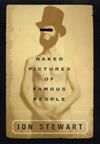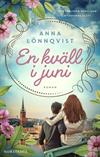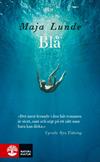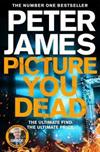
Wasp Factory
by Iain Banks | Literature & Fiction | This book has not been rated.
ISBN: 9780349101774 Global Overview for this book
ISBN: 9780349101774 Global Overview for this book
3 journalers for this copy...
Have you ever held a book and wondered where it had been before you came to own it, or where it will end up once you have finished with it? Well, welcome to the world of bookcrossing.
It would make someones day if you add a journal entry to tell those who had the book before you where you found it. You can remain anonymous if you want to, though if you create a screen name you will be able to get notification each time someone else journals this book.
When you have finished please release the book (and make a journal entry stating where you left it) to let it continue on its journey.
Following this book on its travels can be very fun.
It would make someones day if you add a journal entry to tell those who had the book before you where you found it. You can remain anonymous if you want to, though if you create a screen name you will be able to get notification each time someone else journals this book.
When you have finished please release the book (and make a journal entry stating where you left it) to let it continue on its journey.
Following this book on its travels can be very fun.
The Wasp Factory was the first novel by Scottish writer Iain Banks. It was published in 1984.
It is written from a first person perspective, told by sixteen-year-old eunuch Frank Cauldhame, describing his childhood and all that remains of it. Frank observes many shamanistic rituals of his own invention, and it is soon revealed that Frank was the perpetrator of three deaths within his family - all other children and all before he reached the age of ten. As the novel develops, his brother's escape from a mental hospital and impending return lead on to a violent ending and a twist that undermines all that Frank believed about himself.
The 'Wasp Factory' of the title is a huge clock face encased in a glass box and salvaged from the local dump. Behind each of the 12 numerals is a trap which leads to a different ritual death (for example burning, crushing, or drowning in Frank's urine) for the wasp that Frank puts into the hole at the center within tubes. Frank believes the death 'chosen' by the wasp predicts something about the future.
There are also Sacrifice Poles, upon which hang the bodies and heads of larger animals, such as seagulls, that Frank has killed and other sacred items. They define and 'protect' the borders of Frank's territory - the island upon which he lives with his father.
Frank occupies himself with his rituals and an array of weapons (from his catapult, to home-made flame throwers and pipe bombs) to control the island. He goes for long walks and runs, and occasionally gets drunk with his dwarf friend Jamie in the local pub. Other than that, Frank has almost no contact with the world outside his island and admits he is afraid of it due to what it did to his brother, Eric.
A 1997 poll of over 25,000 readers listed The Wasp Factory as one of the top 100 books of the 20th century. But as a first novel by an unknown author, the book was initially greeted with a mixture of acclaim and controversy, due to its gruesome depiction of violence. While this is mostly against animals, Frank also recollects killing three younger children when a child himself. The murders are described in an honest and matter-of-fact way, often with grotesque humour; what may be more disturbing than the details of the violence itself is the depth and intensity with which Frank is portrayed. What is also most shocking about the novel is the fact that the reader actually starts to sympathise with and even like Frank despite his monstrous, psychopathic actions.
The novel works largely as a 'Bildungsroman' as it deals with Frank's ability to deal with events going on around him as he has grown up. In terms of genre it fits into the Gothic Literature due to its exploration of death, mortality and arguably presentations of the monstrous.
It also deals with Banks' sceptical attitudes towards organised religion. Frank is obsessive about ritual and the form of things; the Wasp Factory and the Sacrifice Poles are protective talismans, and divinatory in intent.
The novel is also about power and its abuse. Frank's father's deception of his son (one of Banks' central themes, which appears again in The Crow Road), and the propensity of people for deceiving themselves, are accentuated in the final chapters of the book when new facts force the reader to reassess completely the opinions formed about the narrator.
It is written from a first person perspective, told by sixteen-year-old eunuch Frank Cauldhame, describing his childhood and all that remains of it. Frank observes many shamanistic rituals of his own invention, and it is soon revealed that Frank was the perpetrator of three deaths within his family - all other children and all before he reached the age of ten. As the novel develops, his brother's escape from a mental hospital and impending return lead on to a violent ending and a twist that undermines all that Frank believed about himself.
The 'Wasp Factory' of the title is a huge clock face encased in a glass box and salvaged from the local dump. Behind each of the 12 numerals is a trap which leads to a different ritual death (for example burning, crushing, or drowning in Frank's urine) for the wasp that Frank puts into the hole at the center within tubes. Frank believes the death 'chosen' by the wasp predicts something about the future.
There are also Sacrifice Poles, upon which hang the bodies and heads of larger animals, such as seagulls, that Frank has killed and other sacred items. They define and 'protect' the borders of Frank's territory - the island upon which he lives with his father.
Frank occupies himself with his rituals and an array of weapons (from his catapult, to home-made flame throwers and pipe bombs) to control the island. He goes for long walks and runs, and occasionally gets drunk with his dwarf friend Jamie in the local pub. Other than that, Frank has almost no contact with the world outside his island and admits he is afraid of it due to what it did to his brother, Eric.
A 1997 poll of over 25,000 readers listed The Wasp Factory as one of the top 100 books of the 20th century. But as a first novel by an unknown author, the book was initially greeted with a mixture of acclaim and controversy, due to its gruesome depiction of violence. While this is mostly against animals, Frank also recollects killing three younger children when a child himself. The murders are described in an honest and matter-of-fact way, often with grotesque humour; what may be more disturbing than the details of the violence itself is the depth and intensity with which Frank is portrayed. What is also most shocking about the novel is the fact that the reader actually starts to sympathise with and even like Frank despite his monstrous, psychopathic actions.
The novel works largely as a 'Bildungsroman' as it deals with Frank's ability to deal with events going on around him as he has grown up. In terms of genre it fits into the Gothic Literature due to its exploration of death, mortality and arguably presentations of the monstrous.
It also deals with Banks' sceptical attitudes towards organised religion. Frank is obsessive about ritual and the form of things; the Wasp Factory and the Sacrifice Poles are protective talismans, and divinatory in intent.
The novel is also about power and its abuse. Frank's father's deception of his son (one of Banks' central themes, which appears again in The Crow Road), and the propensity of people for deceiving themselves, are accentuated in the final chapters of the book when new facts force the reader to reassess completely the opinions formed about the narrator.
I would have thought that descriptions of a child killing other children would have shocked and horrified me more than it actually did. That is because the story is told in a casual, matter of fact way with no gratuitous violence. It is the casualness that is the most shocking.
It was a quick read, I read it during one long coach trip, and the story did keep you guessing, revealing points bit by bit. I found the ending a bit strange. I did not really get the wasp factory bit, beyond different methods of killing something; you have to have a twisted mind to think that such a thing can predict the future. Very odd ending, and I did sympathises a bit..
This is not a book for someone who does not what to see inside the mind of a twisted individual or look at a dysfunctional family.
It was a quick read, I read it during one long coach trip, and the story did keep you guessing, revealing points bit by bit. I found the ending a bit strange. I did not really get the wasp factory bit, beyond different methods of killing something; you have to have a twisted mind to think that such a thing can predict the future. Very odd ending, and I did sympathises a bit..
This is not a book for someone who does not what to see inside the mind of a twisted individual or look at a dysfunctional family.

Thanks so much for your donation bookowl1000!
This book is now part of the 1001-library. If you want to take this book from the library but don't know how to proceed, please refer to the 1001-library bookshelf.
Put into the 1001-Library UK bookbox
Picked from Soffitta's 1001 Bookbox. Thanks for sharing! =]














